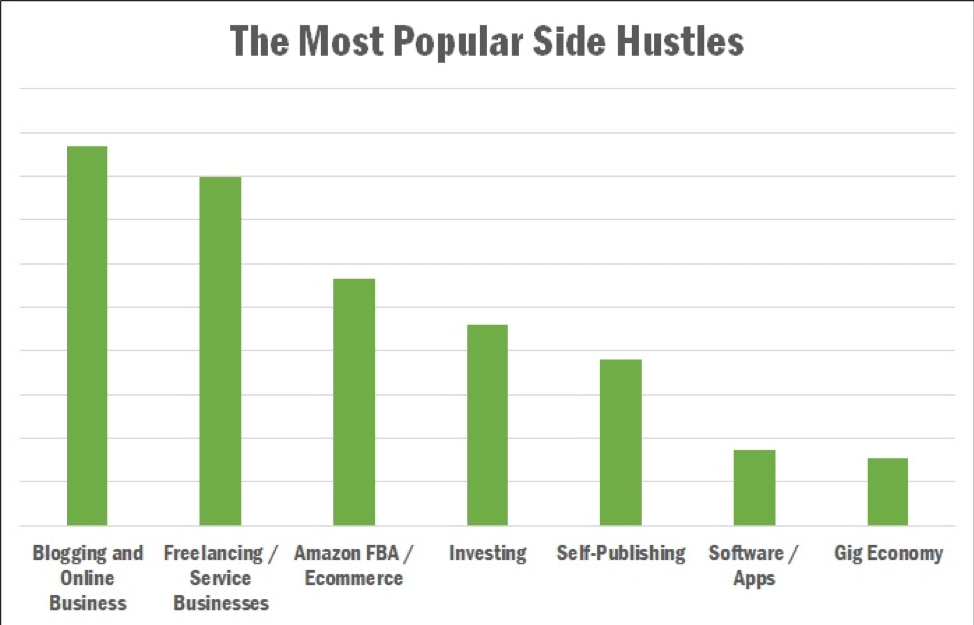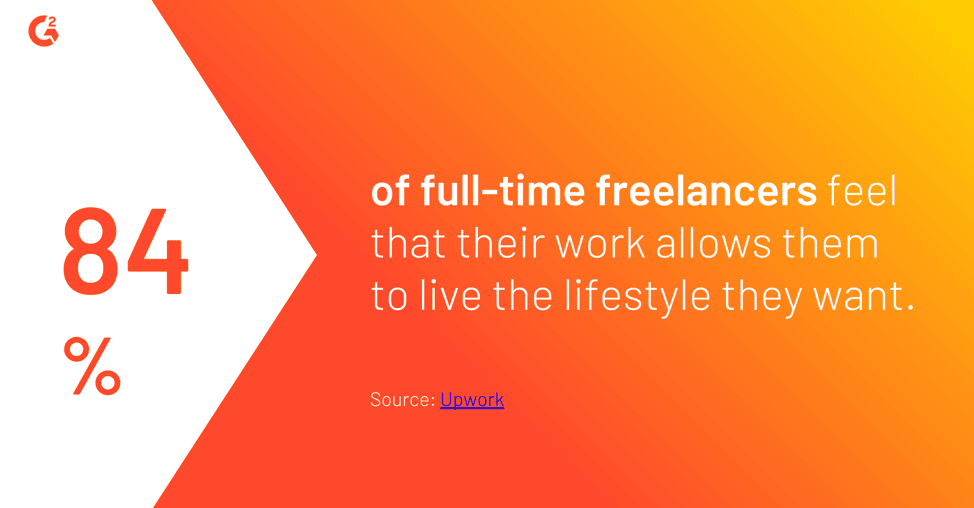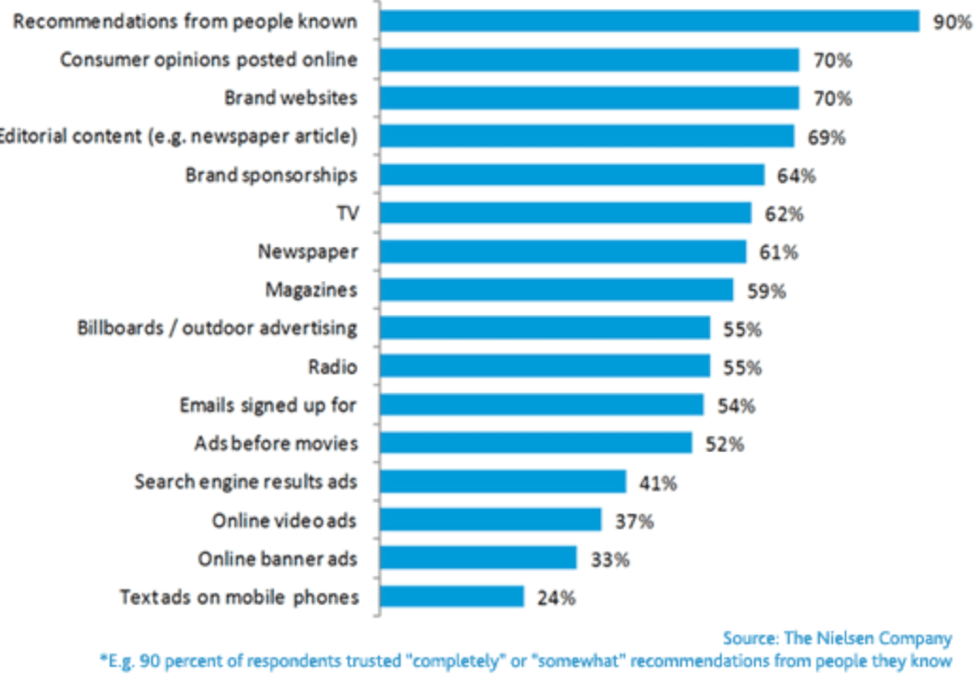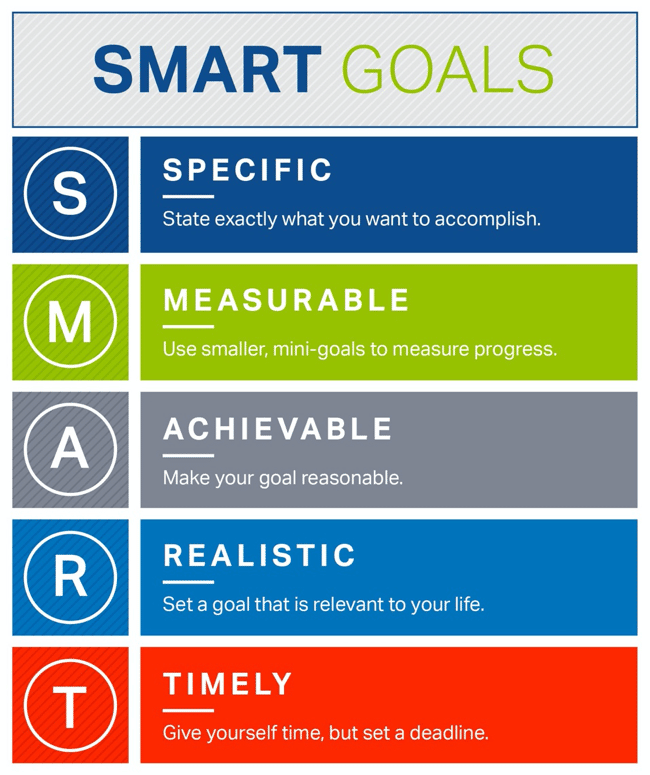Wouldn’t you like to make money doing something you love? According to Yahoo Finance, more than 50 % of Americans have already said yes to this question by starting their own side-hustle.
In this post, I’ll talk about how to create one and turn it into a revenue-generating machine. For context, here are some statistics from a Side hustle Nation report to help you understand the side hustle landscape better.
- The average side hustler spends 11 hours per week on their secondary work and earns $12,609 per year — an average of about $25 per hour.
- 76% percent of side hustlers love their hustle, but only half like their job.
- At 50%, most side hustlers are just thinking about getting started.
- The two most popular side hustles are blogging and freelance work.
- Of the most popular types of side hustles, all of them are service-oriented, whereas only one is product-focused–I’ll touch on the significance of this distinction later.

If you want to see more stats like these, access the full report.
What exactly is a side hustle?
Many think side hustles (I’ll also refer to them as side projects) are a part-time job. But, there are some differences. Most notably, like the name says, to be successful, you’re going to have to hustle.
In other words, what you get out of it depends on the effort you put into it. With a job, your income is pretty static. Here are some other qualities that make side hustles different.
- Side hustles often start as pet projects. Usually, most of us are passionate about our pet projects, and it’s almost always easier to work with something you love. If you have a pet project with income earning potential, you may have the beginnings of a side hustle.
- They’re a form of secondary employment. While similar to starting your own business, side projects are something you’re doing in addition to a day job. However, if all goes well, your pet project could quickly turn into a full-time job (if that’s what you want).
- They aren’t part-time jobs. They may feel like a part-time job considering the amount of work you put in, but everything is on your terms. It’ll thrive (or die) because of you.
One of the best aspects of a side hustle is that it often doesn’t require much if any, initial investment. In fact, at the start, I recommend not hunting for investors or sinking tons of your own money into the venture.
Keep it simple. If you’re feeling brave, then be bold and go all in. Just make sure you have enough cash to last you while you get up and running.
The benefits of a side-hustle
If you’re still unsure whether a side hustle is right for you, consider some of the benefits of running one.
- Start small and grow from there. Many of my clients who own their own business, started first with a side project or with freelancing. Doing so is a way to tip-toe into owning your business. FlexJobs and Fiverr are both great places to post your freelancing abilities and get connected with companies that could use your help. As you grow, you’ll eventually develop a robust portfolio of clients and work to exude credibility and trust.

- You’re the boss. ’Nuff said.
- Boost your self-confidence. As you continue to develop your hustle, you’ll hopefully have some wins along the way. Not only does this feel good, but it’ll show you and potential clients that you’re capable.
- Create income between jobs. Having a side hustle will provide income, and this is especially useful if you’re between jobs. It’ll also keep you busy and ward off the idle-time blues.
- Improve your financial situation. For most folks (70%), financial freedom is the main reason for side hustling—making it the most popular one. What’s more, making money only gets easier over time, provided you put in the work. As you grow, more people will find out about your service/product, and that will generate more business. Plus, as you gain more experience, you can charge more for your service or product.
Check out this article that lists more potential benefits of a side hustle.
Stick to what you know and like
Now that you understand more clearly how side hustles work, what will you choose to do? The old adage “write what you know” applies to side hustles; do what you know. Find something you’re already passionate about and that you have expertise in.

Sounds simple, right? Actually, figuring this out can be more challenging than it appears. Here are some questions to guide you in choosing the right type of side-project.
- What do you spend most of your free time doing?
- What topics do you feel you know well?
- Where/what type of work has brought you the most success?
- Which topics do people bring up when they ask you for advice?
Here’s where figuring out whether you’re going to create a product or offer a service is essential. Innovation doesn’t necessarily mean invention — at least not in a classical product sense. Some of the most innovative people I know provide an insightful service rather than a product.
While it’s up to you and what you’re passionate about, I suggest offering a service over creating a product. That’s mostly because building a product is more expensive. It requires you to invest money, possibly source materials, and gather other items necessary to make what you want to sell. On the other hand, you can start a service with an idea and a computer.
If you’re searching for inspiration about the kinds of projects that have been successful for others, here are some great ideas to get you started.
Tips for success
With the information above, you can turn your ideas into actions. To keep building on your progress, I have some recommendations that’ll help set you up for success. Because, regardless of how many hours you devote to your project, establishing some systems to harness your growth will prove indispensable later.
Tip 1. Make sure your side hustle isn’t in conflict with your day job. Some organizations and businesses have non-compete clauses, and they may even prohibit outside work. It’s a smart idea to check your employee handbook to see if these types of rules apply to you.
Tip 2. Create a project management system. This is especially useful as you grow your client base. As you get busier, you’ll need a method to track projects, record project scope, and due dates. For example, if you’re freelancing, for each project, it’s helpful to record who your client is, the name of the project, the hours you’re dedicating to the project, your negotiated pay rate, and a place for “project next steps.”
What kind of service or product you offer will dictate what you include in your project management system. The point here is that you need a system that you can understand and that you can update quickly.
While there’s no one way to manage a project, many freelancers use Excel. Learn how you can use Excel to create a project management system. If you’re not an Excel person, try these other project management systems: Trello, Asana, Monday, or Wrike
Tip 3. Create your own limited liability corporation (LLC). Having a side-project gives you freedom, but it can also give you a tax headache. If you have an LLC, you can write off all the expenses related to your side hustle–effectively reducing your tax rate.
Writing off expenses isn’t the only benefit here. Having your own business will also make you look more professional. If you think about this from your clients’ perspective, they’ll be paying a company, which can feel a bit more legitimate than paying an individual. And, with the authority of an incorporated business behind your service, you can start charging more as people will likely take you more seriously.
If you are looking for software to help you keep track of hours, expenses, and invoices, check out Bonsai. You can use it for 2 weeks for free to see if it’s a good fit for you.
Tip 4. Build your personal brand. In the beginning, you’ll be relying heavily on your own brand as you tap into friends and existing contacts. Creating a sharp personal brand image that communicates who you are, what you do or offer, and your relative value in the marketplace is vital. One study shows that 90% of people trust product or service recommendations from people they know.

So, make sure your image is buttoned up. And once it is, make sure that your website is easy to read and fits your brand image. You can also check out this article that gives you a road map to creating a solid personal brand.
The tips above are the ones I find especially valuable. But there are other useful ideas about how to manage your side hustle. The big takeaway here is to do your research and figure out what you’ll need to succeed.
Scaling to a six-figure business
As your project matures, harnessing your growth to build a stronger service or product is a reliable way to drive revenue. How do you gain a competitive edge and expand your customer base? Let’s look at three strategies to accelerate your side hustle’s growth.
1. Develop a marketing strategy.
In the same Side Hustle Nation study I quoted in the beginning, side hustlers reported that marketing is their biggest challenge. But if you want to expand your reach and target new audiences, you’re going to have to create a marketing plan and implement it. If you’ve never done this, it can seem overwhelming.
To get you started, here are some easy and affordable ideas to get the word out about your product or service. This list is not exhaustive. Instead, I’ve found that the below tactics help create a solid foundation for you to thrive.
- Create a website. With services like Instapage, Elementor, Optimize Press and Unbounce, creating your own site is much easier than you may think. You don’t need web design experience to create a simple site and get it up and running in minutes. Plus, having a website will allow you to showcase your work, update your features and services, and market your content. Many of these sites are free or inexpensive. Note that before you can sign up for these services, you may want to consider buying a custom domain which can be tied to your overall brand and business. I would recommend signing up with these services to register your domain because they are easy-to-use and inexpensive: BlueHost ($3.95 a mo.), Kinsta (starts at $30 a mo.), or DreamHost (starts at $2.59 a mo.).
- Mobilize your current network. Don’t underestimate the power of your friends. You’d be surprised at how often your friends can connect you with potential customers. But even with friends, it’s a good idea to have a practiced pitch, often called an elevator pitch. Check out Indeed’s instructive article on how to create an elevator pitch.
- Have an easy way to automate and communicate. Rather than manually sending out emails, updating your social media, and having to store all of your potential/existing customer information, etc. you can leverage tools like HubSpot and Ontraport, which help you with all of this. Ontraport is a great solution if you’re just getting started and need a cost effective tool to send out emails, SMS texting, reporting and analytics, etc. HubSpot, on the other hand, costs more but I absolutely love their easy-to-use and intuitive platform for sending automated emails, designed templates you can use, and being able to schedule social media updates.
- Leverage the power of LinkedIn. Your profile should be detailed, up-to-date, and clearly state what you do or offer.
- Draft a primary messaging doc. This document will be your source of truth because it will articulate how you will talk about your product or service. It’s crucial that no matter where you are and whom you’re speaking to, that your message is consistent. This will solidify the brand image of your side hustle into customers’ minds.
- Be consistent across all channels. Everywhere you have a presence, from print to social media, your image and message need to be the same. For example, if you have an introductory blurb on your LinkedIn page that’s totally different than one on your webpage, that will confuse visitors. Your messaging doesn’t have to be identical across channels, but it should be very similar.
- Develop a content marketing plan: One of the best ways to market your service or product is through content. You can write blog posts or long-form content, like an eBook, to show potential clients that you’re knowledgeable about the subject. Content marketing helps you connect with more audiences and it’s a great supplement to any marketing plan.
The tactics above offer a blueprint for establishing a winning marketing strategy. As your hustle grows, evolving your plan and keeping up with your clients and orders, may become overwhelming.
At this stage, it’s time to partner with an expert. Choosing the right marketing partner can catapult your side hustle income to six figures. Spend time on researching who you want to work with, and choose wisely.
See my previous post on How to Start Your Business in Just 4-Weeks for more tips.
2. Work with a strategic business partner
Just like with a marketing strategy, choosing a business partner that can amplify your message and reach, will increase your revenue by orders of magnitude. Perhaps the most important feature here is partnering with a business that has a board reach combined with a trusted reputation.
Working with another company will assuredly cost you money, but that’s because the potential for revenue growth is immense. Some topics to consider when choosing a partner are:
- What is your vision for the partnership? Is it aligned with theirs?
- Does the potential partner share your values?
- How will you measure success?
- Who is responsible for what?
3. Set realistic goals
Once you’re clear on your vision, the importance of setting goals to align is next. Be realistic on what you want to be able to achieve. A simple framework to start with is setting SMART goals:

Dream big, live in the present
Like quality, success is a habit, not an act. For your side hustle, that means staying committed and setting goals and expectations. Most side-projects do not experience overnight success, so be realistic about what you hope to accomplish. It’s great to dream big and plan for the future, but don’t lose sight of the moment. Create a plan. Put your head down. And start hustling.
Disclosure: Please note that some of the links above are affiliate links. I only recommend products and services that I use and stand behind, and if you decide to try them, I will earn a commission at no cost to you. Doing so helps me run this blog and provide free content for you, my readers.






5 Responses